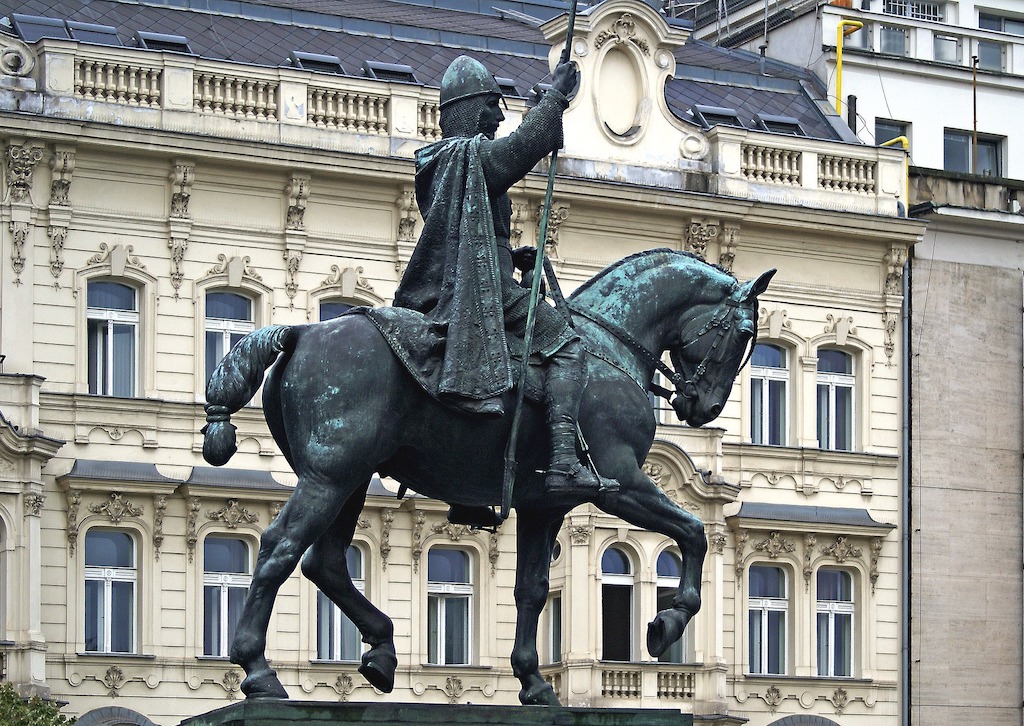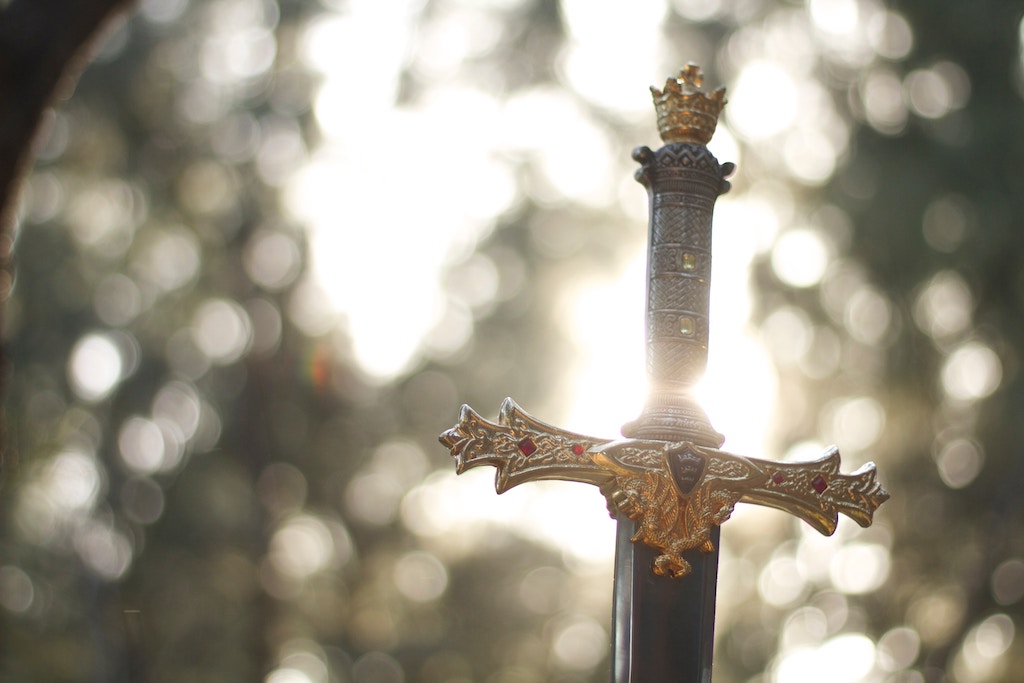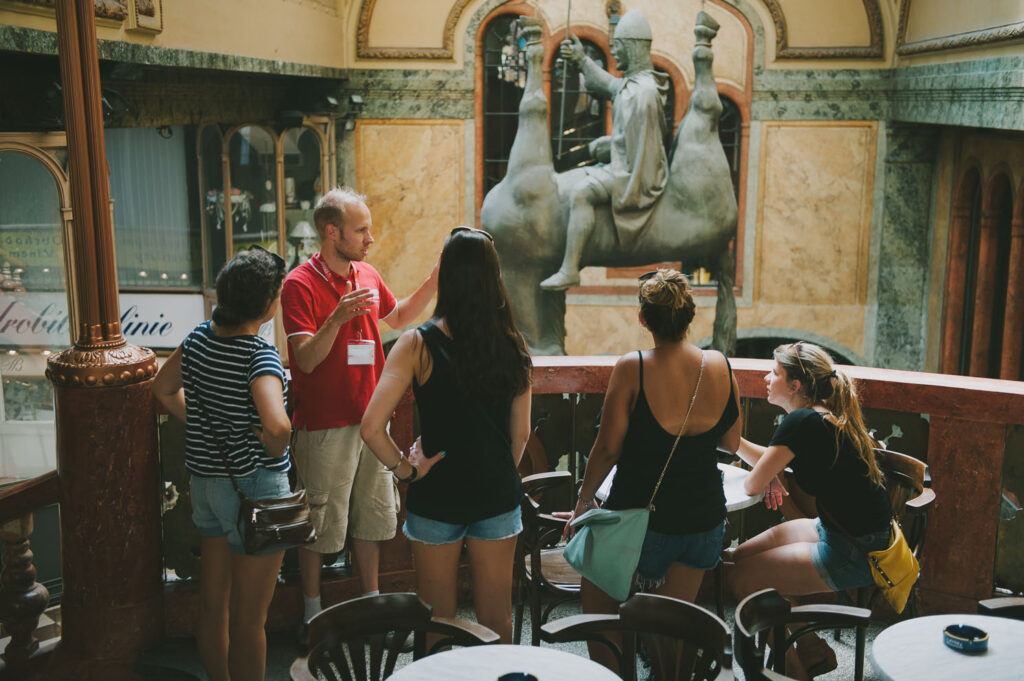28th September in Honor of the “Good King Wenceslas”

As a young boy growing up in the US, I would sometimes hear a song around the Christmas time about the “Good King Wenceslas,” some guy named Steven, and a feast. I never gave it much thought. Just another in a line of boring holiday music. Wenceslas was supposed to have magic feet to warm the snow… I wasn’t impressed. Now that I live in Prague, I can’t go a day without tripping over some mention of him. So, my question was “Who is this guy Wenceslas and why should I care?”
Long story short. The big W. was actually a Duke during his lifetime, which was somewhere between 907 and September 28, 935 (or 929 we don’t know for sure). He is the grandson of Borivoj and Ludmila, and I just have to say those names are about as Czech as you can get. Borivoj was converted by Saint Cyril and Saint Methodius, who can best be described as the Batman and Robin of Christianity in this area. I may cover this dynamic duo on a later blog.

Anyway, Borivoj was all go when it came to Christianity and in his newfound excitement built the first church in Prague. His son, the father of Wenceslas, would build even more and our good king would continue the tradition by building a rotunda that would later give Charles IV. the idea to build St Vitus Cathedral. These were some church building folks. They also passed their beliefs down to their country and families. Ludmila took particular interest in the religious upbringing of Wenceslas. But there was about to be trouble in the church-filled Kingdom. Hang on, this is like a very bloody daytime soap opera.
Borivoj died, leaving the throne to his son who then died before Wenceslas was old enough to rule. Wenceslas’ grandmother Ludmila would be the default authority until he had reached 18 years of age. This didn’t sit well with Wenceslas’ mother Drahomira. She was the daughter of a pagan leader from Germany and, although she claimed to be converted, many doubted she gave up her pagan beliefs. I must add that I couldn’t have thought up a better name for an evil character. She apparently had temper issues because, quicker than you can say Game of Thrones, she had Ludmila strangled to death using the poor old lady’s own scarf. That is a particular kind of nasty.
Drahomira would rule until Wenceslas was of age. During this time she wasn’t very nice to the Christians so, when he was old enough to rule, he packed her bags and bought her a ticket out of town. I will avoid getting too deep into the politics of the period but, as was common then, plenty of fighting, religious teaching, and more fighting took place. Big W. was quite religious and his reputation as a devoted Christian became well known. In one story he is to visit a German ruler. He is late due to his prayer time. The ruler made a few comments about the fact he was probably off at some church but when he finally arrived the ruler stood up and told all assembled that here is a fine example of a good Christian. At one point, a war was on the horizon and in his negotiations, he worked out a peaceful arrangement and was rewarded with a relic of St Vitus. He would later build a rotunda in dedication to the saint on the spot where the Cathedral is today.

Wenceslas had a brother Boleslav and due to their differences they had split the kingdom much like kids have to be separated when they can’t play nice. Boleslav wanted more than just his side of the playground and on September 28, 935 (or 929? who knows…), he had Wenceslas assassinated by inviting him to a party and then having him attacked. Family issues never seem to change.

Today, Wenceslas is remembered as a good leader and a devout man. By the thirteenth century, he is given the posthumous title of King and is now also considered the patron saint of the Czech people. In the song “Good King Wenceslas,” the verses mention his humility and kindness with the final words “Ye who now will bless the poor shall yourselves find blessing.” I think he would be proud to have those words spoken of him.
You will find out more about Wenceslas on our Prague City Highlights Tour, any of our guides would be more than happy (and proud) to tell you about our good king. You might as well visit the statue of Wenceslas on a horse at the top of Wenceslas Square (what a surprise). In fact, this monument is the meeting point for our popular Beer Tour. Or, to lighten up the serious historical mood, check out the statue by our contemporary artist David Cerny in the Lucerna Passage at the bottom of the square. It also shows Wenceslas on a horse, but, ummm… a little bit upside down.

What’s up on the 28th of September?
In honor of our “Good King Wenceslas,” the 28th September was made into a national holiday. If you happen to be in Prague around this time, you should help us celebrate the event by ordering the traditional St. Wenceslas roasted goose with red cabbage and potato dumplings. It’s Czech, it’s delicious, and it will give you an accurate idea of the local cuisine. There are also St. Wenceslas markets in the city, where you can buy some of the traditional Czech products. One of them is in the Wenceslas Square, the other in front of the Palladium Shopping Mall in the Republic Square. And for wine lovers, there is St. Wenceslas grape harvest festival at the Prague Castle. Don’t miss the chance to taste the best Czech wine on one of the oldest vineyards in central Europe!
September 28, 2019

